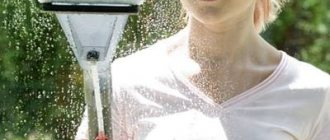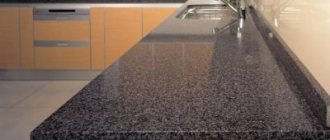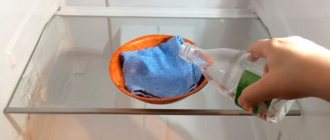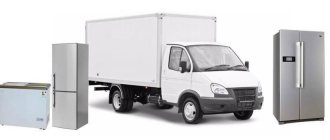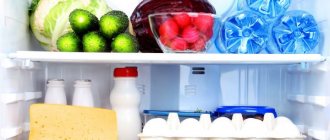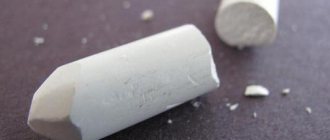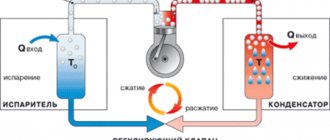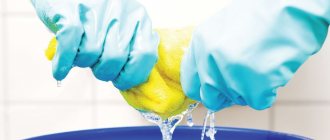The refrigerator is one of the most commonly used household appliances. Over time, various contaminants inevitably appear on its internal and external surfaces that must be removed.
Washing refrigerators equipped with a know frost system has a number of features that must be taken into account when performing the procedure.
Preparing for cleaning at home
Before you start cleaning the No frost refrigerator, you need to prepare it. This process includes the following steps:
The temperature regulator in the device is set to zero;- a rag is placed next to the door;
- disconnect equipment from the power supply;
- remove all food from the refrigerator;
- remove shelves, drawers, pallets, grates - all elements that can be detached are best washed separately;
- leave the freezer open and wait for the ice to disappear;
- accumulated water is collected with a sponge.
To assess the thickness of the ice layer, you can remove the back wall of the freezer. If it is thick, this indicates either improper operation of the device or a malfunction in its operation.
Varieties
The nofrost design involves two types of refrigerators:
- Frost Free;
- Full No Frost and Total No Frost.
The very first systems had only one fan supplying the entire chamber with cold air. But such technology has not been relevant for several years. It has been transformed into three new modifications, which will be discussed below. Some budget Asian models still use only one fan. But such a phenomenon is rare in our market.
It is extremely rare to find No Frost refrigerators operating with one fan.
Modern models are designed in such a way that cold air is supplied to each compartment through a separate channel. This promotes uniform cooling of products in any part of the chamber. Models with inverter compressors have two fans, which significantly increases their efficiency.
See alsoKitchen design using wenge: choice of color scheme, style, expert advice
What formulations can be used?
To clean the refrigerator, you can use both available detergents and specialized household chemicals. The most important rule is that the chosen composition must be liquid.
Under no circumstances should the following methods be used:
- Powders. Hard particles will leave scratches on the surface of the device, which in the future will become a source of unpleasant odor. Moisture accumulates in such microcracks, becoming an ideal place for microbes to multiply.
- Caustic compounds. They can damage the surface of the device and seals.
- Products with a strong odor or substances that are toxic to the body. Such compositions are prohibited for use on surfaces in contact with food.
To treat surfaces, you can safely use soda, vinegar, hydrogen peroxide, liquid dishwashing detergent, and soap. A solution is prepared from the listed substances, which is used to treat the refrigerator and all elements.
Another option is to use store-bought products designed to care for household appliances.
Refrigerator cleaning products should not include:
- chlorine,
- alkalis,
- highly concentrated acids,
- acetone or solvents.
To remove dirt, use only soft cloths or sponges.
How to quickly wash the inside of the device without defrosting it?
Despite the fact that the Know Frost refrigerator assumes automatic defrosting, this procedure must be carried out manually at least once a year . A thorough cleaning includes high-quality cleaning of all sections, including the freezer.
If not much time has passed since the last defrosting, and the refrigerator needs cleaning, you can do without defrosting.
However, you will have to act quickly:
- the refrigerator is disconnected from the network;
- the freezer is left closed;
- quickly remove, wash and dry all shelves;
- remove dirt from the internal walls of the device;
- wash the outside of the refrigerator;
- carefully collect all the moisture - for this it is better to use paper towels;
- install components in place, put products on shelves.
You need to take care of the cleaning product in advance. If store-bought formulations are immediately ready for use, then improvised solutions require manufacturing.
Available means
In every home there are compounds that can be used to care for the refrigerator:
Baking soda is the #1 refrigerator cleaner.
It is not used in its pure form; a solution is prepared on its basis. For 1 liter of water you will need 2 tablespoons of soda. After treating all surfaces, the solution must be removed with a clean damp cloth.- Laundry soap . It is rubbed into shavings, dissolved in warm water and all contaminated areas are treated. The product needs to be washed off.
- Vinegar. To prepare the solution you will need 2 tablespoons of 9% vinegar and 1 liter of water. Wipe all surfaces with the resulting composition. To provide a deodorizing effect, you can leave it on the surface for 15 minutes and then rinse off.
The listed compositions can be combined. For particularly difficult areas, use a mixture of vinegar and soda.
Household chemicals
You can clean the Know Frost refrigerator using specialized household chemicals, which are introduced specifically for these purposes. Such products are sold in retail stores, as well as in online markets.
In addition, refrigerator manufacturers are developing formulations designed specifically for their brands. They claim that such chemistry is safe and most effective. However, branded liquids are expensive and are rarely found on the open market.
Does it need to be defrosted?
The know frost system provides for automatic defrosting of the device . However, many owners of household appliances during their operation are faced with the fact that frost forms in the freezer and sometimes even inside the refrigerator compartment.
Why does this happen? The reason for the formation of ice is non-compliance with the rules for using the refrigerator: overloading the shelves with many pots, bowls of food, placing hot food in it.
ATTENTION! The appearance of a snow “coat” may be associated with a malfunction of the device: failure of the thermostat, damage to the rubber seal on the door, clogging of the capillary tubes.
In addition, the operation of the know-frost system is directly affected by the choice of the correct operating mode of the refrigerator: too low a cooling temperature for the chambers or a constantly turned on super-freezing function leads to freezing of the chambers.
Taking into account the listed factors, it should be said that even such modern devices also require manual defrosting. The frequency of defrosting directly depends on the rate of ice formation; in most cases, the device must be defrosted and washed at least once a year.
If frost is not removed, the heat exchange between the chamber walls and the refrigerant will be disrupted . As a result, the compressor will have to work with more power, which can lead to rapid wear of the functional element and breakdown of the refrigerator.
IMPORTANT! One of the main factors indicating the need for urgent defrosting of the device is the thickness of the formed ice: if the layer of frost on the walls approaches 1 cm, start defrosting.
Read about how to turn on the refrigerator after defrosting.
TOP best
The best products for cleaning No Frost refrigerators:
Gel Clean Home
A universal composition that is gentle on various surfaces. Advantages:
- Available in liquid form,
- easy to apply on a sponge,
- has a pleasant smell,
- Effectively removes even stubborn stains.
The product contains hydrogen peroxide and active oxygen ions. Bottle volume – 200 ml. Price – 93 rubles.
Sano Refrigerator Cleaner Spray
Liquid with a pleasant smell, suitable for cleaning interior and exterior surfaces . A convenient sprayer allows you to economically dose the composition. Package volume – 750 ml. Price – 460 rubles.
Luxus Professional
Spray with a pleasant mint aroma. It can be used to care for know frost refrigerators, as well as freezers.
The composition not only perfectly cleans all surfaces, but also eliminates unpleasant odors. Volume – 500 ml. Price – 154 rubles.
How to get rid of the smell?
To get rid of the unpleasant odor coming from the No Frost refrigerator, you need to follow these recommendations:
- completely defrost the device;
- rinse the drain hole;
- remove and wash the tray;
- check all products for spoilage, get rid of those that emit an unpleasant odor;
- wash the refrigerator with products that have antibacterial properties: hydrogen peroxide, vinegar solution, a solution of water and vodka, taken in equal proportions;
- Dry the refrigerator and leave it to ventilate for 12 hours.
After following the proposed algorithm of actions, the smell should disappear. To consolidate the result, you can use a regular lemon, cutting it into slices and placing it on the shelves of the refrigerator for 2-3 days.
You will find a lot of useful information on how to remove odors from the refrigerator using folk remedies here, and using household chemicals here.
Where to start cleaning?
Start cleaning the refrigerator only after it has defrosted:
- set the thermostat to position “0”, disconnect the device from the network;
- lay old towels on the floor around the refrigerator, open the door of the device and fix it in this form;
- remove food from the refrigerator and place it in a cool place;
- remove all removable elements (shelves, drawers), wash them in soapy water, rinse and leave to dry;
- remove the moisture formed during the defrosting process and begin washing the device.
Find out more about defrosting a two-compartment Bosch refrigerator. Read about how to defrost a Stinol two-chamber refrigerator here.
What not to do and why?
Rules that must not be broken:
It is not recommended to use vinegar to wash the seal. A highly concentrated solution is especially dangerous. It can cause the rubber to lose its elasticity.- If you do not plan to defrost the refrigerator, then you should not open the freezer while cleaning.
- Do not attempt to scrape off dried food debris with a knife, blade or other sharp instrument.
- Before any washing of the refrigerator (with or without defrosting), it must be disconnected from the power supply to avoid electric shock.
- Before placing the glass shelf under running hot water, you need to wait until it warms up. Otherwise the part may burst. Boiling water should not be used.
No Frost refrigerator: care features
If the owner transports the refrigerator himself, he must adhere to certain rules. It is ideal that the unit is in an upright position during transportation. As a last resort, its angle of inclination should not exceed 40 degrees. If the refrigerator can only be delivered lying down, then you need to make sure that the compressor tube is at the top.
The unit should be installed away from heating appliances. You should also limit direct exposure to sunlight. The minimum distance between the refrigerator and the stove is at least half a meter. The space around the unit must be free - at least within a radius of 5 cm. Only if this condition is met, sufficient air circulation is ensured and overheating of the compressor is prevented.
Important! If the floor in the room where the refrigerator will be installed is planned to be insulated, then the space for the unit should be left unheated.
Helpful information
Tips that will come in handy when cleaning your No Frost refrigerator:
- If ice has accumulated inside the freezer, do not remove it with a wire brush or try to speed up the defrosting process with a hairdryer. Such actions can lead to damage to household appliances.
- It is convenient to clean the holes on the fan grille with cotton swabs soaked in a cleaning solution.
- When defrosting the appliance, you need to pay attention to the drain hole located on the back wall of the appliance. It is cleaned with a brush, and then washed with a syringe (without a needle).
- When cleaning the refrigerator, you need to move from top to bottom so as not to dirty the already washed shelves.
- After washing, you need to let the device air out, leaving it open for at least 1-2 hours.
You will find useful tips and tricks for cleaning your refrigerator in this section.
Tips for preventing ice from forming in the refrigerator
- To slow ice formation, wipe the inside of the walls with a mixture of water and glycerin. Dissolve them 1 to 1. An alternative option to prevent ice formation is to wet the walls with vegetable oil.
- Try not to leave the refrigerator door on for a long time so that warm air from the room does not affect the appearance of condensation.
- Wipe away accumulated water at the bottom of the refrigerator to prevent it from turning into ice.
Simple preventive measures will help you avoid icing. Do not neglect timely defrosting if you want your household appliances to last longer than their service life according to the passport.




